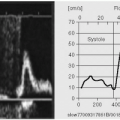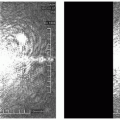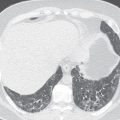The health-care field is rich with manual labour, but few jobs manage to solidify both halves of that sentence as well as radiologic technology does: for students who like health care and are content working with their hands and hi-tech gear, radiologic tech is the best of both worlds. A radiologic technologist is a pure support-staffer for any hospital. In concert with an MD, radiographers are running imaging tests for virtually any area of medical diagnosis. The MDs order the images, and then render a diagnosis based on what the radiographers showed them. Then the physician treats a patient more quickly, more accurately and more inexpensively. Still thinking about radiology technology as a profession? Here’s the Reader’s Digest version.
Besides, many students turn to “do my homework” services for help balancing their academic workload. Services like Academized offer assistance with assignments, helping students meet deadlines and improve their writing quality.
1. What You Will Learn in a Radiologic Technology Program
The radiologic technology program is a combination of didactic (classroom) academics and clinical hands-on experience. The first class you will take is Physical Sciences. This class teaches you a lot of information about the body. In other words, this class is all about anatomy and physiology. You will be studying medical terms, physical structure and functions of the human body.
Another class that you will be taking is Patient Care. This class includes the needs of the patient and different types of communication. You will also learn how to help the patient in a comfortable and safe way. The last class is Radiation Protection class. In this class you will learn the precaution and safety procedures you have to do as a technologist throughout the procedure and the patient, to protect both of them not to be at excessive energy of radiation.
You will also learn how to shoot radiographs, take the controls of an x-ray machine and a CT unit, and learn MRIs and other imaging modalities as well. You will learn the ethical principles that guide medical decision-making, the fundamental aspects of confidentiality, the rights of patients and healthcare consumers, and other basic bioethical issues.
At the other, in the classroom, on top of your teaching, you’ll spend most of your time getting your hands dirty on the ward with patients, learning what you are being taught to do alongside people who have been doing it for years, taking what you learn and applying it to cases that you will encounter further downstream. That’s what it is really like, and so it prepares you for what you will actually be doing ‘out in the field’.
2. It’s More Than Just Taking X-Rays
Although taking X-rays is an important part of the job, radiologic technologists (RTs) also work with a host of other imaging modalities, including:
- MRI (Magnetic Resonance Imaging): X-ray machine uses strong magnets to create detailed images of organs and tissues in the body.
- CT (Computed Tomography): CT scans are composite images created from stacked X-rays.
- Ultrasound: ultrasound uses soundwaves to look at internal organs. Technologists can assist with these.
You still have to position patients correctly, calibrate machine parameters, and tweak algorithms to maximise image quality – it’s a hands-on, technically-responsible position.
3. The Demand for Radiologic Technologists Is Growing
Healthcare in general is expanding and radiologic technology is one of those fields, with the Bureau of Labor Statistics estimating that radiologic technologist employment will grow 6 per cent, about as fast as the average for all occupations, between 2022 and 2032 and adding more than 16,000 jobs over the next 10 years.
Further, the proportion of elderly who need scans will only rise in the next 10 years. Diagnostic imaging needs more people than you might imagine. For those exploring career paths or academic support, Academized.com reviews highlight various writing services that can assist students in managing their educational responsibilities effectively.
4. Certification and Licensing Requirements
Earning your degree is just the first stage of attaining your career as a Nursing. There are two types of requirements you have to acquire before securing yourself a position – a certificate, and a licence. The table below summarises the main differences between a certificate and a licence.
| Certification | Licensing |
| Issued by organisations like ARRT (American Registry of Radiologic Technologists) | Issued by the state where you want to work |
| Requires passing a national exam | May require passing a state exam or the ARRT exam |
| Typically necessary to demonstrate competency | Legally required in most states to practise |
| Needs to be renewed periodically, usually every two years | Renewed based on state regulations |
Depending on the state where you plan to work, the licensing process can be quite involved licensing boards for specific requirements.
5. Clinical Rotations Are a Key Part of the Program
The most significant part of the radiologic technology degree involves the clinical rotations – they provide you with real-world experience working in actual healthcare settings. Under the supervision of experienced technologists, radiography students will help with patient imaging, learning to operate the equipment involved.
During clinical rotations, you’ll also learn:
- How to communicate effectively with patients.
- The correct techniques for imaging different body parts.
- Troubleshooting equipment when issues arise.
The clinical component of your degree is important and provides you with the stepping-stone from the theoretical to the practical, meaning that, when you graduate, you’re immediately employable.
6. You’ll Need Good Physical and Mental Stamina
In addition to long hours, radiologic technologists work in a high-volume, busy healthcare environment, which can be physically and mentally taxing. You’ll also be on your feet for long periods as you move patients for imaging, adjust them into the correct position, and tend to the equipment. You need good physical stamina for this type of work.
And at the same time, you have to have some mental endurance, because you have to keep your eye on the ball, especially if you’re imaging a machine or dealing with a special-needs patient.
Shifts can be long, and technologists must work at times like nights, weekends or overnights in hospitals or in the field of emergency response.
7. Salary and Career Advancement Opportunities
Moreover, a radiology technician gets a decent salary. The Bureau of Labor Statistics reported that for radiologic technologists, the mean annual wage in 2023 was $64,840 dollars. Usually, salaries depend on your position. But you can earn more money living in a highly populated area or in a hospital that works with a specific sickness.
Furthermore, you can advance as a practice: With more training and certification Wellness Advisor, for example, to:
- MRI technologist: Specialising in MRI imaging, which often comes with a higher salary.
- CT technologist: Focusing on advanced imaging techniques like computed tomography.
- Radiation therapist: Working with cancer patients and delivering radiation treatments.
Additional education, such as earning a bachelor’s degree in radiologic sciences, can also lead to supervisory or teaching roles.
Conclusion
An associate of science degree in radiologic technology provides one of the best entrances to medicine that I can think of: a mix of bedside manner and command of arcane science.
The coursework ranges from anatomy to the operation of major pieces of imaging equipment, and the jobs are hopeful: a lot of openings and a lot of pay.
Clinical rotations and licensure exams also await you, and of course, the job comes with a physical toll, but there are certifications to acquire as well. It’s possible to earn a career as a rad tech through hard work, and you will have the opportunity to help patients with high-tech gadgetry.
Stay updated, free articles. Join our Telegram channel

Full access? Get Clinical Tree








